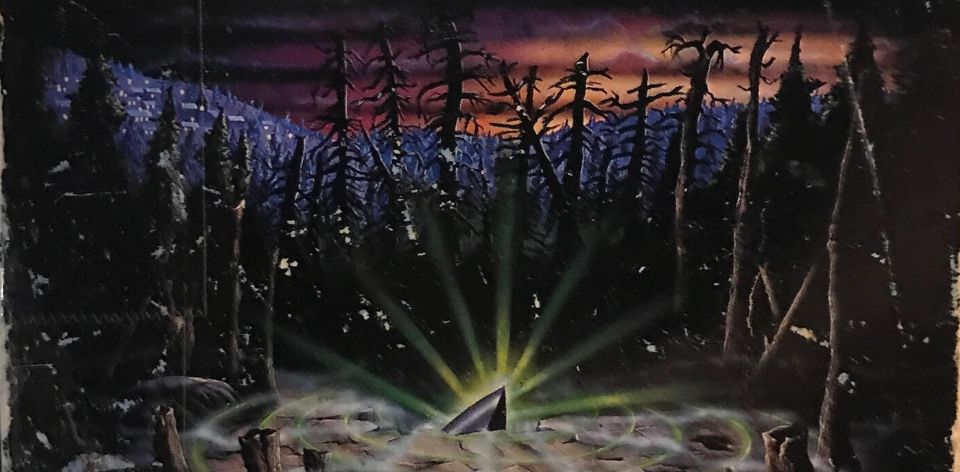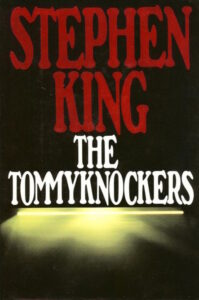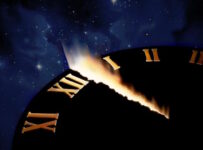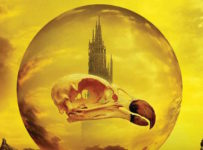Welcome back to the feature column that explores Stephen King’s books in the order they were published…sort of! Is one of Mr. King’s least favourite books as bad as he thinks?
WARNING: this article knocks on the door of spoilers.
When an author refers to his own work as “an awful book,” you have to take it with a grain of salt. After all, if you find a writer who has switched off their inner critic, then they are probably six feet underground.
First published in November 1987, King has stated that this was one of the last books he wrote under the influence of drugs and alcohol. I won’t get into this well-covered territory again here – having necessarily discussed it already in my looks at The Shining, Cujo, Needful Things, Doctor Sleep and On Writing to name a few – but it is worth noting from the outset. After all, one of the lead characters is an alcoholic on a path to literal self-destruction.
King’s books have always been infused with Lovecraftian horror, but with the exception of a handful of shorts he’d never gone completely into supernatural sci-fi. THE TOMMYKNOCKERS wastes very little time getting into The Colour of Space-inspired tale, introducing writer Roberta “Bobbi” Anderson shortly before her discovery of a long-buried metallic object that turns out to be a spaceship.
“Late last night and the night before, Tommyknockers, Tommyknockers knocking on my door. I wanna go out, don’t know if I can ‘cuz I’m so afraid of the Tommyknocker man.”
The fictional town of Haven, not too far from Bangor and Derry, begins to experience a series of transformations, personality shifts and disappearances as the ship exerts its influence. In a moment worthy of Dick Halloran himself, the alcoholic poet James Eric Gardener (or simply ‘Gard’) senses that Bobbi is in trouble and comes running. Thanks to a metal plate in his head, he’s less susceptible to the influence of the creatures he dubs ‘Tommyknockers.’
There’s a lot here that King does very well. Splitting his book into three distinct sections, Book II is where we see the best and worst of his style. As he did in the thematically similar ‘Salem’s Lot, King introduces us to the town via a series of vignettes. Some pay off immediately, with a character under the influence creating a battery-powered time-bomb, while others sew the seeds of things to come in the book’s concluding section.
King would rework this basic structure a few years later in Needful Things, a book King says was the first written after his rehabilitation from drug and alcohol use. The irony is that both books are hamstrung by their dedication to a formula that mostly succeeds in expanding the volume’s page count.
Unlike the societal microcosm of Jerusalem’s Lot, or the inherent darkness of Castle Rock, the town of Haven feels created to be dispensable. Entire characters are introduced with complex backstories only to be removed pages later. Bobbi’s sister is a great example of this, while the young David Brown and his amateur magician brother Hilly only serve as a more sympathetic set of characters than the problematic Gard.
Gard is something of a William S. Burroughs figure: a blackout drunk who has a reputation for having shot his wife in the face, as Burroughs did with Joan Vollmer. We might sympathise and semi-root for Gard’s initial attempts to help the transforming Bobbi. Yet it’s the latter who could have been the more interesting character. Instead, she’s another wasted opportunity for a study in body horror. There’s not enough of a hook to keep constant readers focused. While sharing some of his moral failings, Gard’s no Father Callahan – although it’s yet to be seen if his fate is as epic as that of the wayward priest.
“He thought he saw a clown grinning up at him from an open sewer manhole – a clown with shiny silver dollars for eyes and a clenched white glove filled with balloons.”
While Gard may not end up in the Dark Tower saga, there’s an almost aggressive amount of intertextuality present in THE TOMMYKNOCKERS. There’s casual references to ka, the spiritual sense of guidance from King’s vast multiverse, but more specific callbacks as well. Arcadia Beach from The Talisman is visited, and there is a boy named Jack there. The Arrowhead installation from The Mist is mentioned, and later The Shop from Firestarter serves a role. There are nods to Jack Nicholson in The Shining movie and even Stephen King himself at one point. The Micmacs from Pet Sematary are invoked. In the most overt moment, one character spots a “clown grinning up at him from an open sewer manhole” with “shiny silver dollars for eyes and a clenched white glove filled with balloons.” As Men at Work once sang, who can It be now?
All of these references are nice for us Constant Readers, but they do come at the cost of length. Long bits of description without any signs of editing, coupled with passages that meander off down side-streets, many of which deflate building tension. More than this, King seems to revel in a sea of bodily and other fluids, a grotty texture of passages that litter variations of “squirt” more than a dozen times. Even the most ardent of fans – you know, the ones that have made it through the 823 pages of The Stand or 1,138 pages of It – may find their minds wandering by the midway mark.

So, is THE TOMMYKNOCKERS an “awful” book? Definitely not, although its reputation has made it the subject of some essays on sloppy storytelling. The finale is a blockbuster series of sequential moments, each building on the last in one of King’s most “cinematic” of endings. Indeed, the novel was adapted into a TV mini-series a few years later with Jimmy Smits as Jim Gardner and Marg Helgenberger as Bobbi Anderson, and it didn’t fare much better critically. In 2014, it was ranked the third worst King mini-series. Variety was more succinct. They called it “hokey whoop-de-doo.”
Next time, Inconstant Reader explores the war inside every writer with a pseudonym as we head back to Castle Rock in The Dark Half. While you’re here, go check out Batrock.net, where my buddy Alex Doenau is running through this Stephen King adventure with me.







